Tao Xiang
WenLan 2.0: Make AI Imagine via a Multimodal Foundation Model
Oct 27, 2021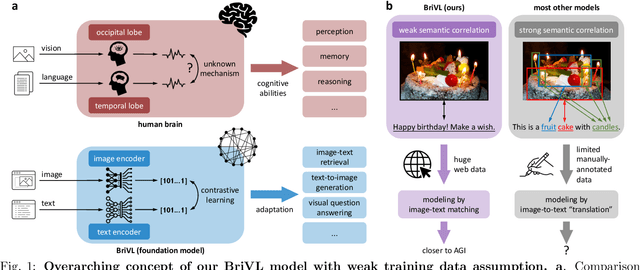
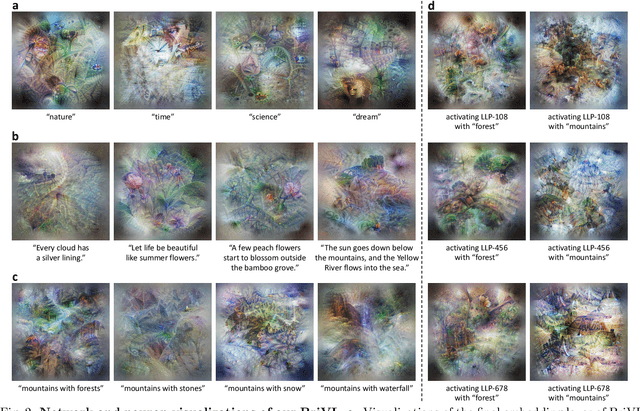

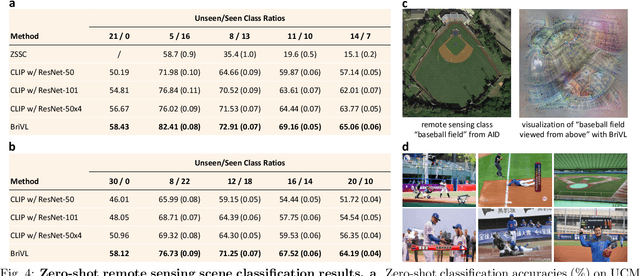
Abstract:The fundamental goal of artificial intelligence (AI) is to mimic the core cognitive activities of human including perception, memory, and reasoning. Although tremendous success has been achieved in various AI research fields (e.g., computer vision and natural language processing), the majority of existing works only focus on acquiring single cognitive ability (e.g., image classification, reading comprehension, or visual commonsense reasoning). To overcome this limitation and take a solid step to artificial general intelligence (AGI), we develop a novel foundation model pre-trained with huge multimodal (visual and textual) data, which is able to be quickly adapted for a broad class of downstream cognitive tasks. Such a model is fundamentally different from the multimodal foundation models recently proposed in the literature that typically make strong semantic correlation assumption and expect exact alignment between image and text modalities in their pre-training data, which is often hard to satisfy in practice thus limiting their generalization abilities. To resolve this issue, we propose to pre-train our foundation model by self-supervised learning with weak semantic correlation data crawled from the Internet and show that state-of-the-art results can be obtained on a wide range of downstream tasks (both single-modal and cross-modal). Particularly, with novel model-interpretability tools developed in this work, we demonstrate that strong imagination ability (even with hints of commonsense) is now possessed by our foundation model. We believe our work makes a transformative stride towards AGI and will have broad impact on various AI+ fields (e.g., neuroscience and healthcare).
Text-Based Person Search with Limited Data
Oct 20, 2021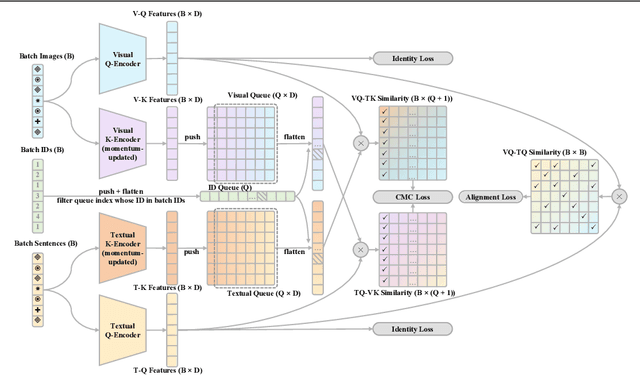
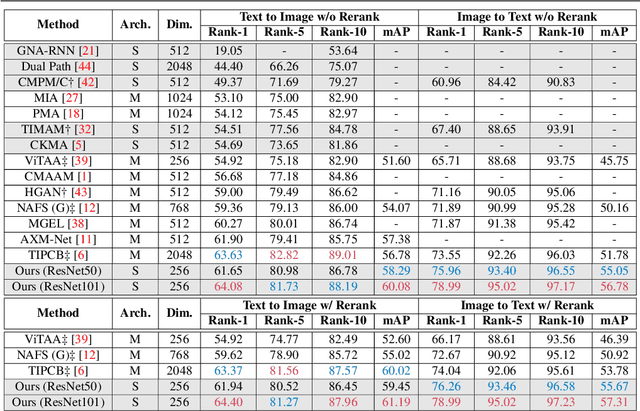
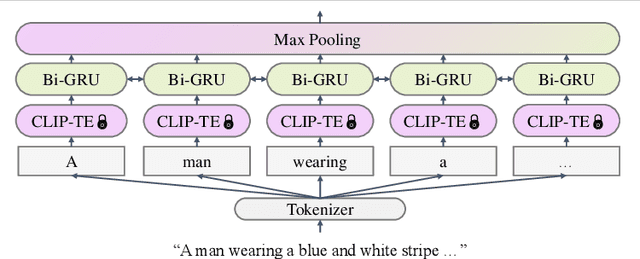

Abstract:Text-based person search (TBPS) aims at retrieving a target person from an image gallery with a descriptive text query. Solving such a fine-grained cross-modal retrieval task is challenging, which is further hampered by the lack of large-scale datasets. In this paper, we present a framework with two novel components to handle the problems brought by limited data. Firstly, to fully utilize the existing small-scale benchmarking datasets for more discriminative feature learning, we introduce a cross-modal momentum contrastive learning framework to enrich the training data for a given mini-batch. Secondly, we propose to transfer knowledge learned from existing coarse-grained large-scale datasets containing image-text pairs from drastically different problem domains to compensate for the lack of TBPS training data. A transfer learning method is designed so that useful information can be transferred despite the large domain gap. Armed with these components, our method achieves new state of the art on the CUHK-PEDES dataset with significant improvements over the prior art in terms of Rank-1 and mAP. Our code is available at https://github.com/BrandonHanx/TextReID.
Few-Shot Temporal Action Localization with Query Adaptive Transformer
Oct 20, 2021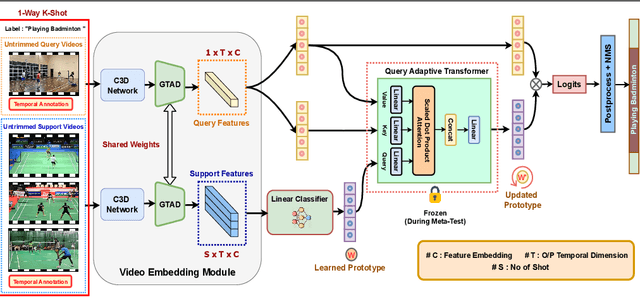

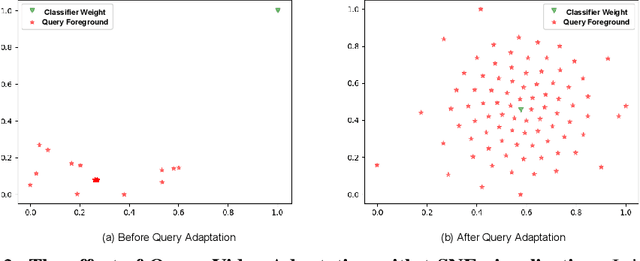
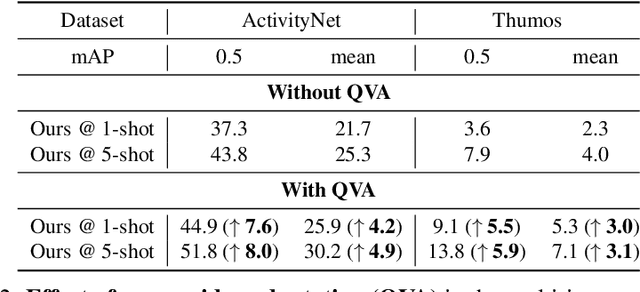
Abstract:Existing temporal action localization (TAL) works rely on a large number of training videos with exhaustive segment-level annotation, preventing them from scaling to new classes. As a solution to this problem, few-shot TAL (FS-TAL) aims to adapt a model to a new class represented by as few as a single video. Exiting FS-TAL methods assume trimmed training videos for new classes. However, this setting is not only unnatural actions are typically captured in untrimmed videos, but also ignores background video segments containing vital contextual cues for foreground action segmentation. In this work, we first propose a new FS-TAL setting by proposing to use untrimmed training videos. Further, a novel FS-TAL model is proposed which maximizes the knowledge transfer from training classes whilst enabling the model to be dynamically adapted to both the new class and each video of that class simultaneously. This is achieved by introducing a query adaptive Transformer in the model. Extensive experiments on two action localization benchmarks demonstrate that our method can outperform all the state of the art alternatives significantly in both single-domain and cross-domain scenarios. The source code can be found in https://github.com/sauradip/fewshotQAT
One Loss for All: Deep Hashing with a Single Cosine Similarity based Learning Objective
Sep 29, 2021
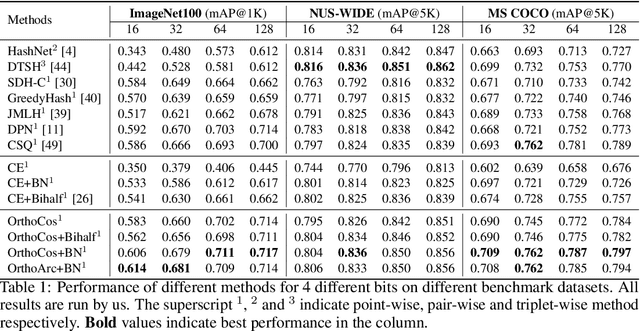

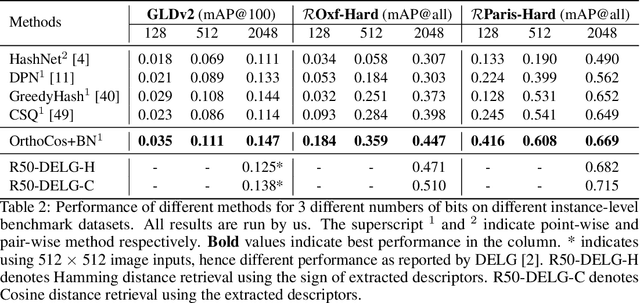
Abstract:A deep hashing model typically has two main learning objectives: to make the learned binary hash codes discriminative and to minimize a quantization error. With further constraints such as bit balance and code orthogonality, it is not uncommon for existing models to employ a large number (>4) of losses. This leads to difficulties in model training and subsequently impedes their effectiveness. In this work, we propose a novel deep hashing model with only a single learning objective. Specifically, we show that maximizing the cosine similarity between the continuous codes and their corresponding binary orthogonal codes can ensure both hash code discriminativeness and quantization error minimization. Further, with this learning objective, code balancing can be achieved by simply using a Batch Normalization (BN) layer and multi-label classification is also straightforward with label smoothing. The result is an one-loss deep hashing model that removes all the hassles of tuning the weights of various losses. Importantly, extensive experiments show that our model is highly effective, outperforming the state-of-the-art multi-loss hashing models on three large-scale instance retrieval benchmarks, often by significant margins. Code is available at https://github.com/kamwoh/orthohash
Disentangled Lifespan Face Synthesis
Aug 13, 2021
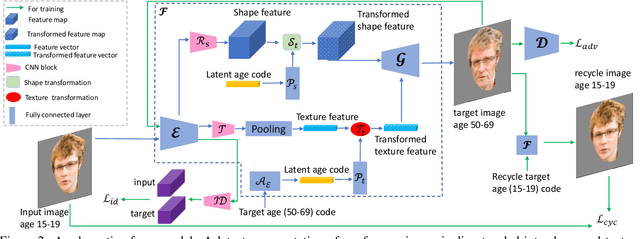
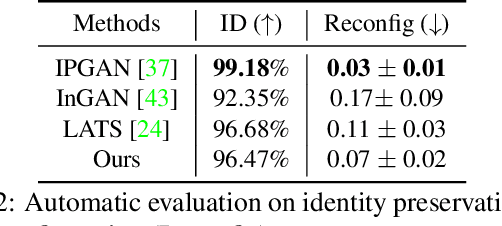
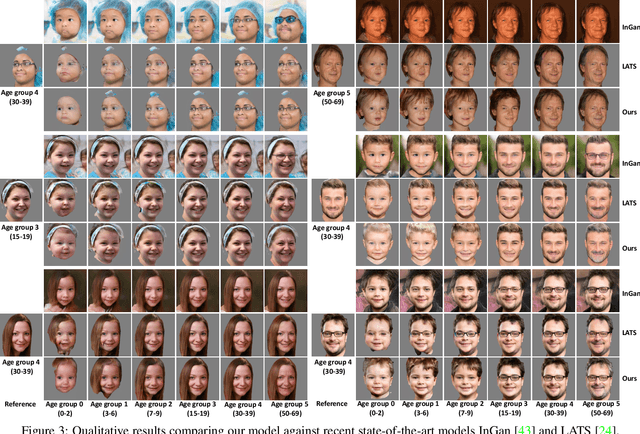
Abstract:A lifespan face synthesis (LFS) model aims to generate a set of photo-realistic face images of a person's whole life, given only one snapshot as reference. The generated face image given a target age code is expected to be age-sensitive reflected by bio-plausible transformations of shape and texture, while being identity preserving. This is extremely challenging because the shape and texture characteristics of a face undergo separate and highly nonlinear transformations w.r.t. age. Most recent LFS models are based on generative adversarial networks (GANs) whereby age code conditional transformations are applied to a latent face representation. They benefit greatly from the recent advancements of GANs. However, without explicitly disentangling their latent representations into the texture, shape and identity factors, they are fundamentally limited in modeling the nonlinear age-related transformation on texture and shape whilst preserving identity. In this work, a novel LFS model is proposed to disentangle the key face characteristics including shape, texture and identity so that the unique shape and texture age transformations can be modeled effectively. This is achieved by extracting shape, texture and identity features separately from an encoder. Critically, two transformation modules, one conditional convolution based and the other channel attention based, are designed for modeling the nonlinear shape and texture feature transformations respectively. This is to accommodate their rather distinct aging processes and ensure that our synthesized images are both age-sensitive and identity preserving. Extensive experiments show that our LFS model is clearly superior to the state-of-the-art alternatives. Codes and demo are available on our project website: \url{https://senhe.github.io/projects/iccv_2021_lifespan_face}.
Simpler is Better: Few-shot Semantic Segmentation with Classifier Weight Transformer
Aug 12, 2021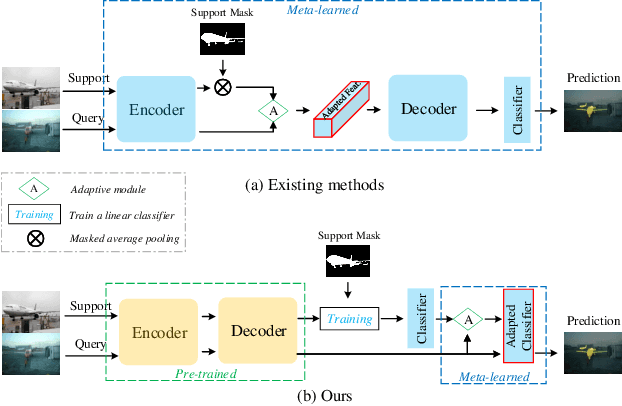

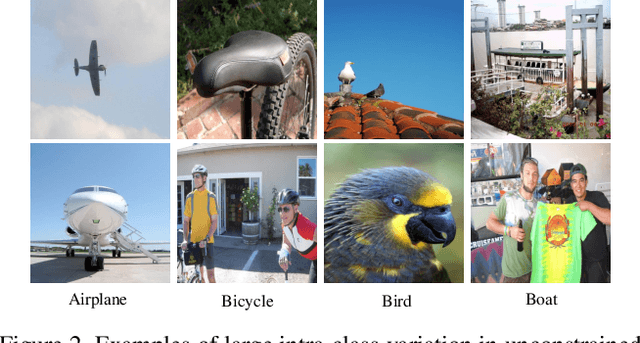

Abstract:A few-shot semantic segmentation model is typically composed of a CNN encoder, a CNN decoder and a simple classifier (separating foreground and background pixels). Most existing methods meta-learn all three model components for fast adaptation to a new class. However, given that as few as a single support set image is available, effective model adaption of all three components to the new class is extremely challenging. In this work we propose to simplify the meta-learning task by focusing solely on the simplest component, the classifier, whilst leaving the encoder and decoder to pre-training. We hypothesize that if we pre-train an off-the-shelf segmentation model over a set of diverse training classes with sufficient annotations, the encoder and decoder can capture rich discriminative features applicable for any unseen classes, rendering the subsequent meta-learning stage unnecessary. For the classifier meta-learning, we introduce a Classifier Weight Transformer (CWT) designed to dynamically adapt the supportset trained classifier's weights to each query image in an inductive way. Extensive experiments on two standard benchmarks show that despite its simplicity, our method outperforms the state-of-the-art alternatives, often by a large margin.Code is available on https://github.com/zhiheLu/CWT-for-FSS.
Global Aggregation then Local Distribution for Scene Parsing
Jul 28, 2021
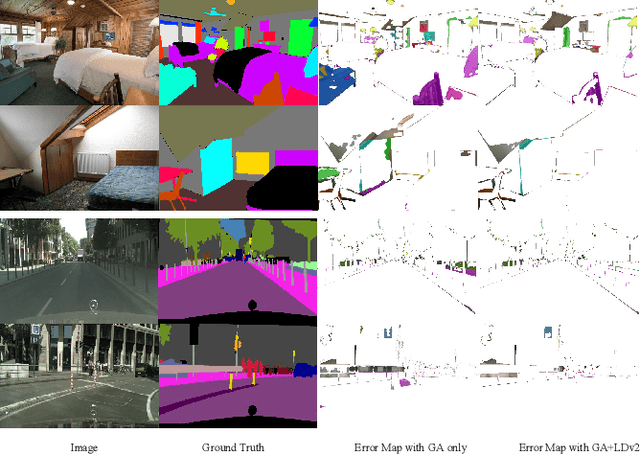
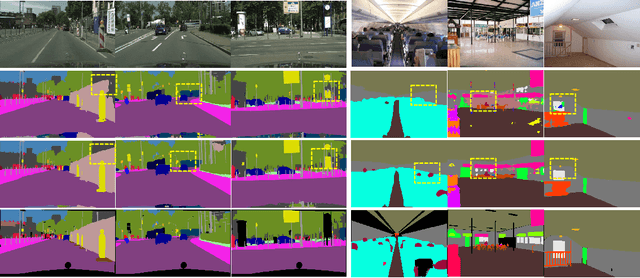
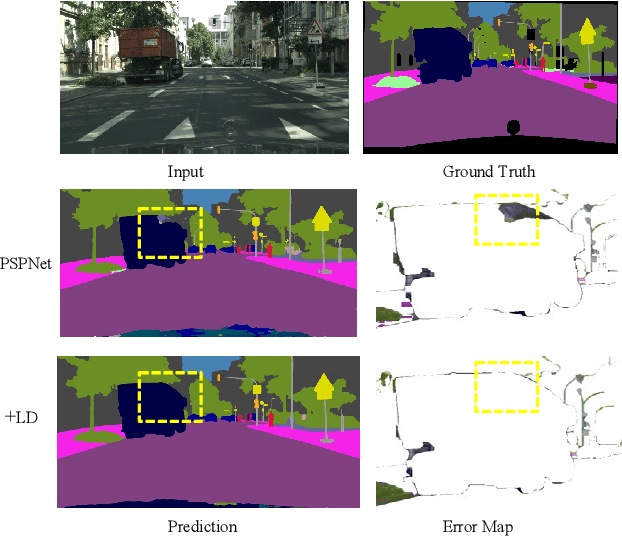
Abstract:Modelling long-range contextual relationships is critical for pixel-wise prediction tasks such as semantic segmentation. However, convolutional neural networks (CNNs) are inherently limited to model such dependencies due to the naive structure in its building modules (\eg, local convolution kernel). While recent global aggregation methods are beneficial for long-range structure information modelling, they would oversmooth and bring noise to the regions containing fine details (\eg,~boundaries and small objects), which are very much cared for the semantic segmentation task. To alleviate this problem, we propose to explore the local context for making the aggregated long-range relationship being distributed more accurately in local regions. In particular, we design a novel local distribution module which models the affinity map between global and local relationship for each pixel adaptively. Integrating existing global aggregation modules, we show that our approach can be modularized as an end-to-end trainable block and easily plugged into existing semantic segmentation networks, giving rise to the \emph{GALD} networks. Despite its simplicity and versatility, our approach allows us to build new state of the art on major semantic segmentation benchmarks including Cityscapes, ADE20K, Pascal Context, Camvid and COCO-stuff. Code and trained models are released at \url{https://github.com/lxtGH/GALD-DGCNet} to foster further research.
MixStyle Neural Networks for Domain Generalization and Adaptation
Jul 05, 2021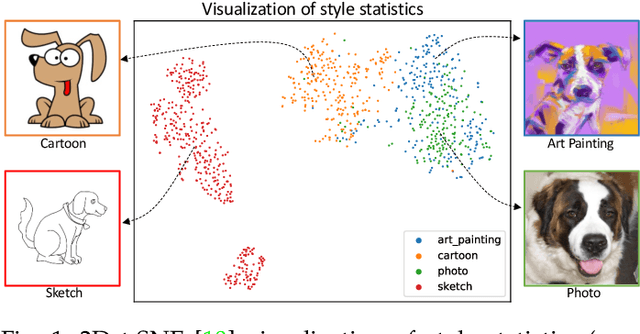
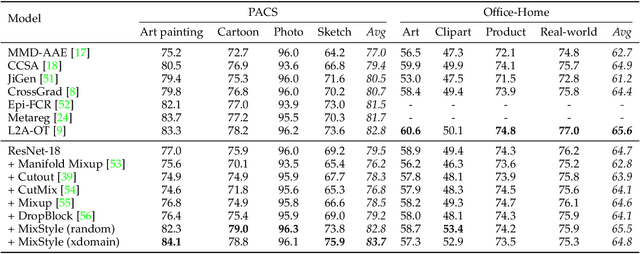


Abstract:Convolutional neural networks (CNNs) often have poor generalization performance under domain shift. One way to improve domain generalization is to collect diverse source data from multiple relevant domains so that a CNN model is allowed to learn more domain-invariant, and hence generalizable representations. In this work, we address domain generalization with MixStyle, a plug-and-play, parameter-free module that is simply inserted to shallow CNN layers and requires no modification to training objectives. Specifically, MixStyle probabilistically mixes feature statistics between instances. This idea is inspired by the observation that visual domains can often be characterized by image styles which are in turn encapsulated within instance-level feature statistics in shallow CNN layers. Therefore, inserting MixStyle modules in effect synthesizes novel domains albeit in an implicit way. MixStyle is not only simple and flexible, but also versatile -- it can be used for problems whereby unlabeled images are available, such as semi-supervised domain generalization and unsupervised domain adaptation, with a simple extension to mix feature statistics between labeled and pseudo-labeled instances. We demonstrate through extensive experiments that MixStyle can significantly boost the out-of-distribution generalization performance across a wide range of tasks including object recognition, instance retrieval, and reinforcement learning.
Domain Generalization with MixStyle
Apr 05, 2021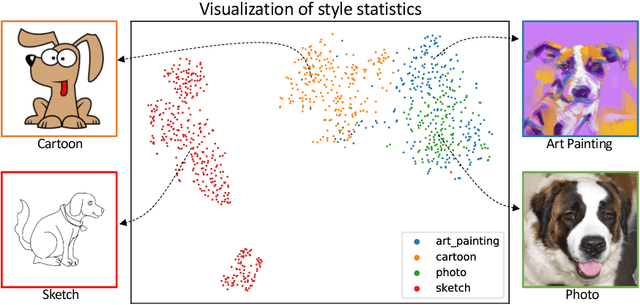
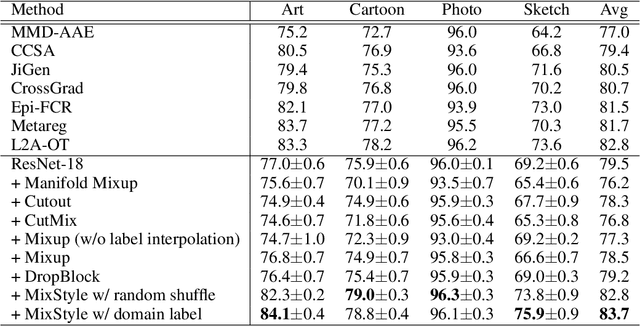
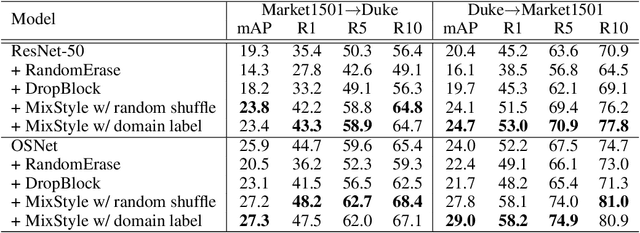
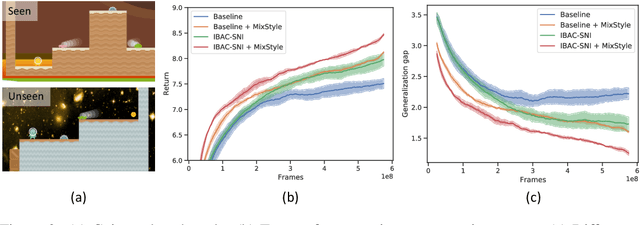
Abstract:Though convolutional neural networks (CNNs) have demonstrated remarkable ability in learning discriminative features, they often generalize poorly to unseen domains. Domain generalization aims to address this problem by learning from a set of source domains a model that is generalizable to any unseen domain. In this paper, a novel approach is proposed based on probabilistically mixing instance-level feature statistics of training samples across source domains. Our method, termed MixStyle, is motivated by the observation that visual domain is closely related to image style (e.g., photo vs.~sketch images). Such style information is captured by the bottom layers of a CNN where our proposed style-mixing takes place. Mixing styles of training instances results in novel domains being synthesized implicitly, which increase the domain diversity of the source domains, and hence the generalizability of the trained model. MixStyle fits into mini-batch training perfectly and is extremely easy to implement. The effectiveness of MixStyle is demonstrated on a wide range of tasks including category classification, instance retrieval and reinforcement learning.
StyleMeUp: Towards Style-Agnostic Sketch-Based Image Retrieval
Mar 31, 2021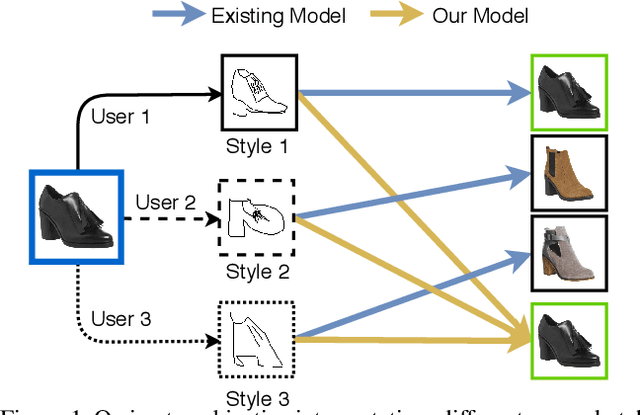
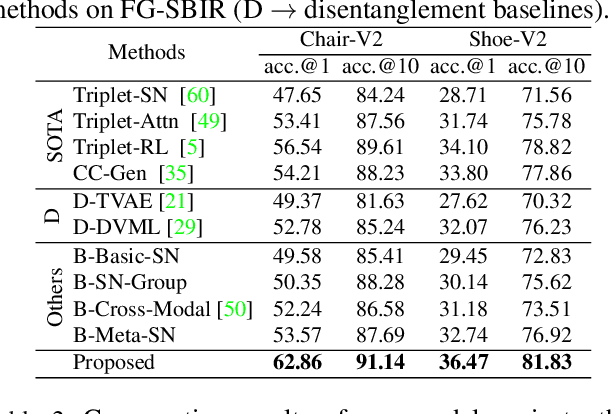
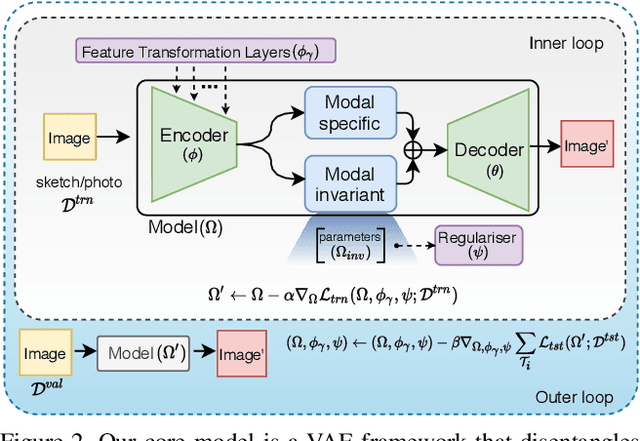
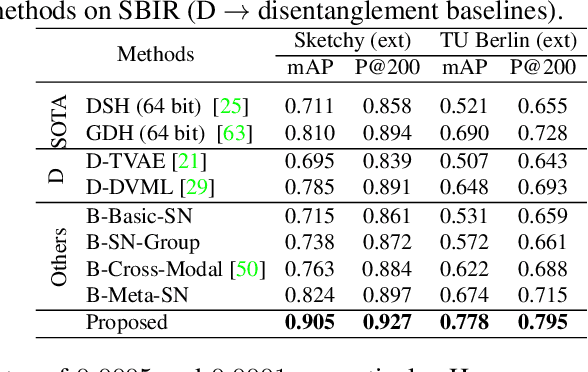
Abstract:Sketch-based image retrieval (SBIR) is a cross-modal matching problem which is typically solved by learning a joint embedding space where the semantic content shared between photo and sketch modalities are preserved. However, a fundamental challenge in SBIR has been largely ignored so far, that is, sketches are drawn by humans and considerable style variations exist amongst different users. An effective SBIR model needs to explicitly account for this style diversity, crucially, to generalise to unseen user styles. To this end, a novel style-agnostic SBIR model is proposed. Different from existing models, a cross-modal variational autoencoder (VAE) is employed to explicitly disentangle each sketch into a semantic content part shared with the corresponding photo, and a style part unique to the sketcher. Importantly, to make our model dynamically adaptable to any unseen user styles, we propose to meta-train our cross-modal VAE by adding two style-adaptive components: a set of feature transformation layers to its encoder and a regulariser to the disentangled semantic content latent code. With this meta-learning framework, our model can not only disentangle the cross-modal shared semantic content for SBIR, but can adapt the disentanglement to any unseen user style as well, making the SBIR model truly style-agnostic. Extensive experiments show that our style-agnostic model yields state-of-the-art performance for both category-level and instance-level SBIR.
 Add to Chrome
Add to Chrome Add to Firefox
Add to Firefox Add to Edge
Add to Edge